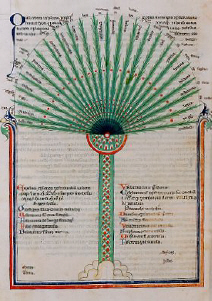12. We have told how this vision is to be procured, whether by the mode of separation or in identity: now, seen in either way, what does it give to report?
The vision has been of God in travail of a beautiful offspring, God engendering a universe within himself in a painless labour and – rejoiced in what he has brought into being, proud of his children – keeping all closely by Him, for pleasure He has in his radiance and in theirs.
Of this offspring – all beautiful, but most beautiful those that have remained within – only one has become manifest without; from him (Zeus, sovereign over the visible universe) the youngest born, we may gather, as from some image, the greatness of the Father and of the Brothers that remain within the Father’s house.
Still the manifested God cannot think that he has come forth in vain from the father; for through him another universe has arisen, beautiful as the image of beauty, and it could not be’ lawful that Beauty and Being should fail of a beautiful image.
This second Kosmos at every point copies the archetype: it has life and being in copy, and has beauty as springing from that diviner world. In its character of image it holds, too, that divine perpetuity without which it would only at times be truly representative and sometimes fail like a construction of art; for every image whose existence lies in the nature of things must stand during the entire existence of the archetype.
Hence it is false to put an end to the visible sphere as long as the Intellectual endures, or to found it upon a decision taken by its maker at some given moment.
That teaching shirks the penetration of such a making as is here involved: it fails to see that as long as the Supreme is radiant there can be no failing of its sequel but, that existing, all exists. And – since the necessity of conveying our meaning compels such terms – the Supreme has existed for ever and for ever will exist.
